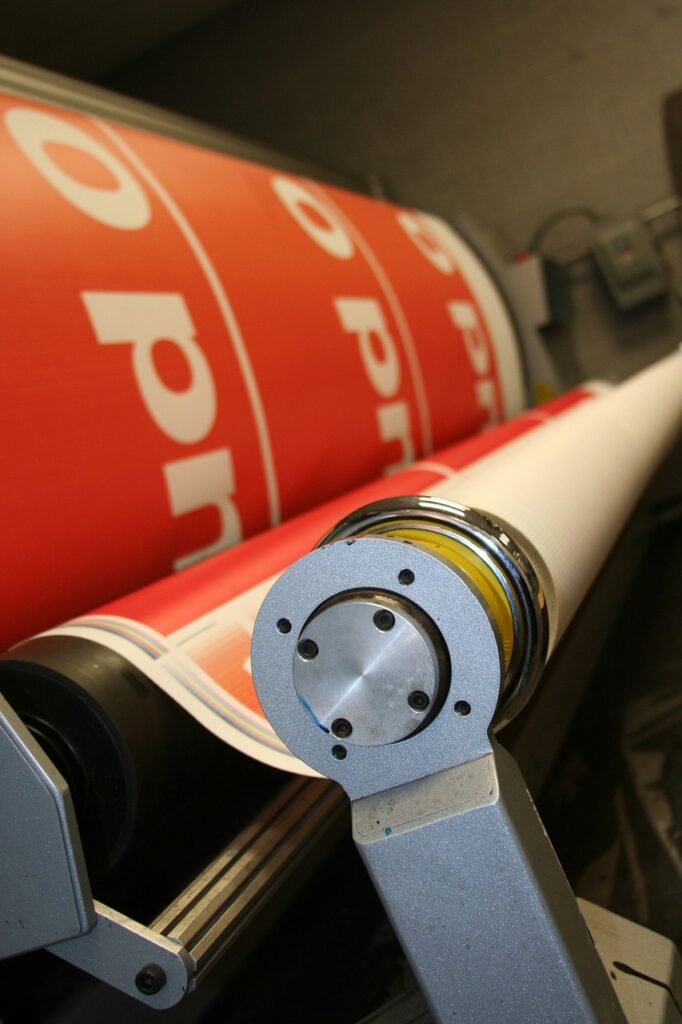Selecting the right materials for your retail signage is crucial for ensuring that your signs not only look great but also perform well in various conditions. The material you choose affects the durability, appearance, and effectiveness of your signage. In this guide, we’ll explore the different types of materials available for retail signage, their advantages, and how to choose the best option for your needs.
1. Vinyl
Vinyl is one of the most popular materials for retail signage due to its versatility and cost-effectiveness. It is ideal for a range of applications including window graphics, banners, and wall decals.
- Advantages: Durable, weather-resistant, and available in various finishes such as matte, gloss, and satin. Easy to apply and remove, making it a great choice for temporary or seasonal signage.
- Applications: Window graphics, banners, wall graphics, and floor decals.
2. Acrylic
Acrylic is a high-quality plastic material that offers a sleek and modern look. It’s often used for high-end retail signage due to its clarity and ability to mimic the appearance of glass.
- Advantages: Lightweight, shatter-resistant, and available in a range of colors and thicknesses. Provides a polished, professional appearance that can enhance the overall aesthetics of your store.
- Applications: Storefront signs, interior signs, and directional signage.
3. Aluminum
Aluminum is a durable, weather-resistant material that is perfect for outdoor signage. It’s known for its longevity and resistance to rust and corrosion.
- Advantages: Strong, lightweight, and durable. Resistant to the elements, making it ideal for outdoor use. Available in various finishes such as brushed, matte, or glossy.
- Applications: Outdoor signs, building signs, and parking lot signage.
4. Foam Board
Foam board is a lightweight and cost-effective material that is often used for temporary or promotional signage. It consists of a foam core sandwiched between two layers of paper.
- Advantages: Easy to cut and shape, making it ideal for custom designs. Inexpensive and suitable for indoor use. Can be easily mounted on walls or used as a stand-alone sign.
- Applications: Event signs, promotional displays, and temporary signage.
5. Coroplast
Coroplast is a type of corrugated plastic that is both lightweight and durable. It’s often used for outdoor signs and real estate signage.
- Advantages: Weather-resistant, lightweight, and cost-effective. The corrugated design provides added strength and durability for outdoor use.
- Applications: Yard signs, real estate signs, and construction site signage.
6. Fabric
Fabric signage offers a versatile and high-quality appearance, making it a great option for events and exhibitions. Fabric signs can be printed with high-resolution graphics and are often used for banners and backdrops.
- Advantages: Provides a high-quality, professional look. Can be easily folded or rolled for transport. Available in various materials such as polyester and canvas.
- Applications: Banners, backdrops, and trade show displays.
7. LED and Digital Displays
LED and digital displays offer dynamic and interactive signage options. They are ideal for creating attention-grabbing displays and conveying real-time information.
- Advantages: Can display animated content, video, and real-time updates. Highly visible and engaging, making them effective for capturing customer attention.
- Applications: Digital billboards, interactive kiosks, and dynamic store displays.
8. Wood
Wood signage provides a classic and elegant look. It is often used for high-end or rustic-themed stores and can be customized with various finishes and engravings.
- Advantages: Durable and can be customized with engravings or painted finishes. Provides a unique, aesthetic appeal that can enhance your store’s atmosphere.
- Applications: Storefront signs, directional signage, and decorative elements.
How to Choose the Best Material for Your Retail Signage
- Consider the Location: Determine whether your signage will be used indoors or outdoors. For outdoor signs, opt for weather-resistant materials like aluminum or Coroplast, while indoor signs can use materials like foam board or fabric.
- Assess Durability Needs: Think about how long you need the signage to last. For long-term use, materials like acrylic and aluminum are ideal, whereas for temporary promotions, vinyl or foam board may be more suitable.
- Evaluate Aesthetic Goals: Choose materials that align with the aesthetic of your store. High-end materials like acrylic or wood may be better for luxury stores, while vinyl and fabric are versatile options for various styles.
- Budget Considerations: Different materials come at different price points. Balance your budget with your needs to select a material that provides the best value for your investment.
- Visual Impact: Consider how the material affects the visibility and impact of your signage. Materials like LED displays offer high visibility, while materials like fabric provide a soft, professional look.
Partner with RetailGraphics for Expert Signage Solutions
When it comes to selecting and implementing the perfect materials for your retail signage, partnering with a professional is essential. RetailGraphics – The Retail Signage Company offers expert guidance and high-quality materials to ensure that your signage not only meets but exceeds your expectations. Our team is dedicated to providing customized solutions that enhance your store’s visual appeal and effectiveness.
Contact RetailGraphics today to discuss your signage needs and explore how we can help you achieve maximum impact with the right materials.

